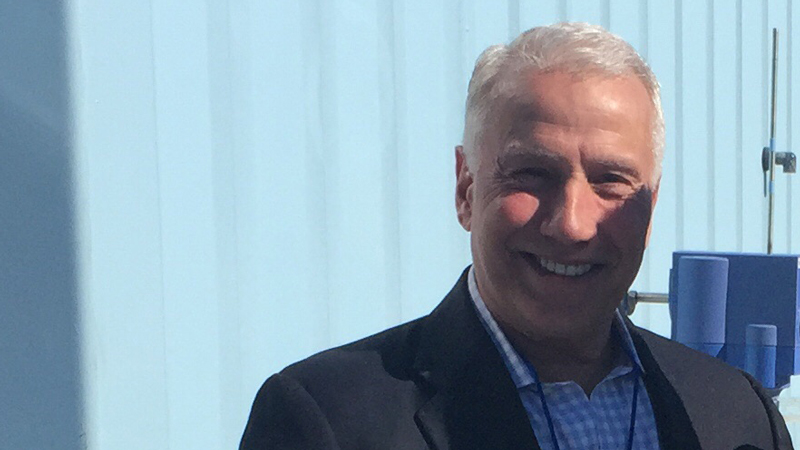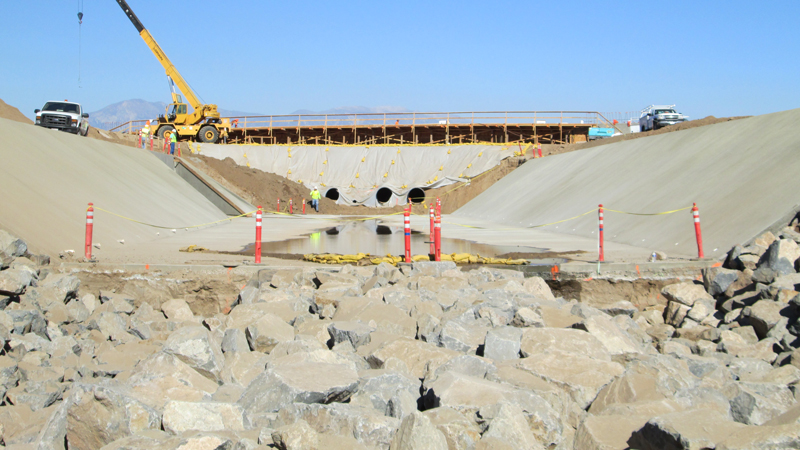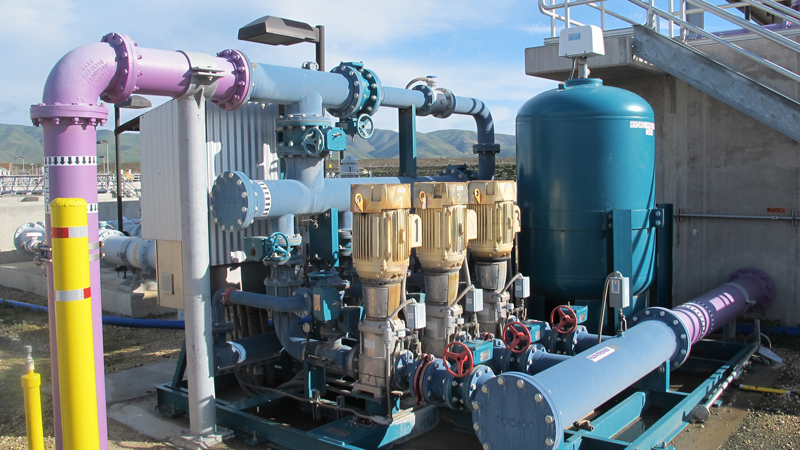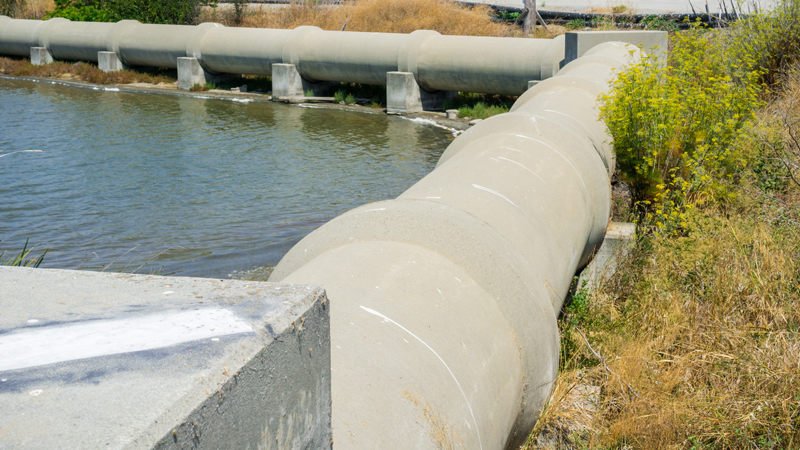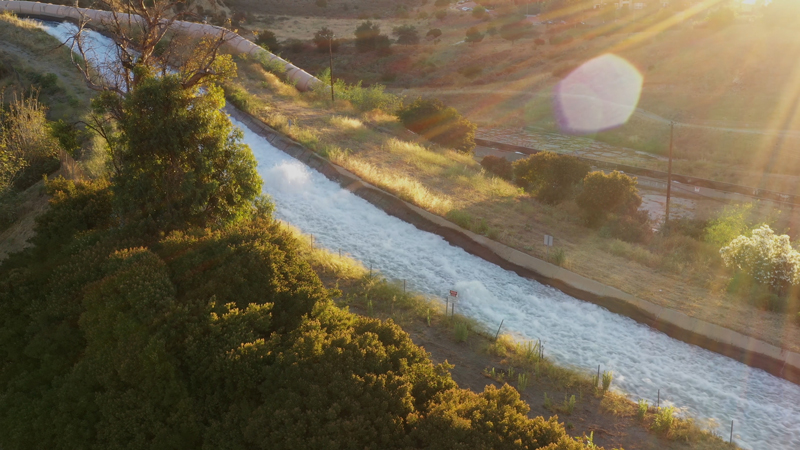Blogpost
4.6 minute read
December 06, 2016
Diversify. That’s the rule in investing money; it’s also the rule when sourcing water for California’s drought-ridden land.
That’s why by 2020 one in every four gallons of water used in the City of Carlsbad will be recycled water, according to Public Works Director Pat Thomas. Combined with its other efforts, like a desalination plant, the City is gaining more control over its supplies and its future.
By contrast, the City chose to expand its Carlsbad Water Recycling Facility (CWRF) with the delivery method offering the least amount of control: design-build. That decision proved to be wise, and I’m proud that my team at Harris & Associates was able to provide the construction management services that kept this vital $8 million project on track.
Setting the standard
While design-build (DB) is famous for speed because the design and construction processes overlap, it also has a reputation for higher quality and greater collaboration. My job on this project has been to represent the City’s interests by ensuring the details of every day’s work deliver on DB’s potential.
Primarily, I serve as chief liaison for all parties, including the DB team (CDM Smith) and the City—addressing daily concerns, negotiating solutions and checking that all work meets contract requirements.
Harris’ role on the project also includes coordinating between the DB team and plant staff to schedule tie-ins and shut-downs, as well as monitoring and tracking the project schedule and budget. We continuously document progress and provide quality assurance review while observing and coordinating startup and testing activities.
Speeding along
The project directly affects quality of life in Carlsbad. There’s no room for error. We’re talking about the design and construction of treatment facilities to expand the CWRF’s capacity by adding 3.38 millions of gallons of water/day, improving the filtration and aiding automation with an integration upgrade of the supervisory PLC system.
All foundations and underground piping were excavated using open-cut construction. Harris oversaw and approved the installation of the Storm Water Pollution Prevention Plan for environmental controls.
Moving parts like these always have to work smoothly, yet any one of them could slow down the process. By going beyond the normal parameters of construction management and cultivating an environment where people will compromise to help the project—my team delivered on an aggressive schedule in a way that exceeded anyone’s expectations.
The design for the facility, which started in August 2015, was approved in December. Construction began in late January 2016, and water system testing began seven months later (with one more month of major construction remaining). Speed was crucial for our client because of a state-imposed December 31 deadline—and we met the challenge.
One way we’ve expedited progress is through an unusual approach to Requests for Information (RFI). Before I send any RFI to engineers, I include suggestions based on my experience and utilizing the Contractors Means and Methods. This extra effort saves the client significantly in cost and time versus having engineers come up with their own solutions. The contractor also benefits because it encourages quicker responses and keeps things moving on schedule.
Relying on relationships

Another way I strive to keep change orders to a minimum is by building strong relationships across the teams and encouraging collaboration toward the greater good. For example, the as-built drawing of one storage facility wall on this project was wrong: There wasn’t a link seal around a pipe after all, so it needed new grouting to prevent leakage. I talked with the project manager, who quickly asked someone on his crew to stay late to grout so the next day’s work could keep moving as planned.
That’s how we kept change orders to 3%—a huge bonus for the client. Actually, that’s my goal on every project, regardless of delivery method. Some people have trouble believing this is possible on a regular basis, but I’ve proven otherwise. I’ve even had auditors follow me around to make sure I was legit. That’s how I earned a moniker I’m rather proud of, “The 3% Guy.”
Another key to success for me that may be a bit unorthodox is getting to know everyone involved and making sure they feel appreciated as part of the team. Simple gestures like greeting each worker with a “Good morning” and ending with “Good night” go a long way. I’m a stickler when it comes to their safety. I take time when possible to teach the younger folks what I’ve learned. Among my biggest lessons: Don’t take criticism personally, and put the project on a pedestal, not your ego.
Rather quickly we all we earn each other’s trust and respect. In turn, the team is comfortable coming to me with all kinds of questions and potential issues I can address before they bloom—allowing me to keep the project running smoothly for everyone involved.
Work that matters
Construction isn’t just a job for me. Helping things getting built the right way is also my hobby and my passion.
I’m especially proud of the role I’ve been able to play on this project for the City of Carlsbad—understanding the importance of diversifying the City’s water source for generations to come. Doing so as part of a team equally committed to keeping costs and timelines down simply adds to the rewarding experience.
What about you? What tactics have you tried to keep teams on task and projects on track? I want to know what works for you.

